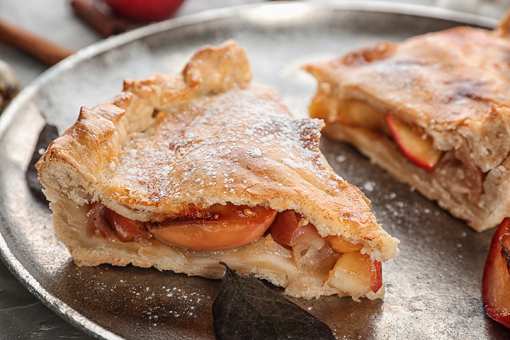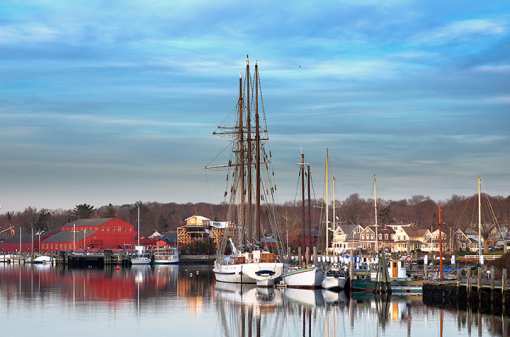Friends Of Wood Memorial Library And Museum Musings From Main - January 20, 2023
From: Wood Memorial Library and Museum
January 24, 2023
Trees
I have been thinking about trees lately, different types of trees actually, and realized I hadn't researched or written about them much. I decided to change that and make the topic of this week's Musings from Main, trees.
Although I haven't studied trees in any great depth, I do know enough to realize that the topic of trees is far too large to cover in one Musing. I had to narrow it down. I grabbed the "tree" book off of my bookshelf to see where it would lead me and being titled A Natural History of Trees of Eastern and Central North America, it seemed serendipitous to keep the topic close to home. I flipped through it. The book contains 606 pages of information about trees in this small corner of the world! I still had a lot of options to sort through.
Let's see...deciduous or coniferous? Connecticut's White Oak or the Colorado Blue Spruce? Wait! There are deciduous conifers? (Yes, apparently about 20 species.) How about...maples...walnuts...aspens...or perhaps poplars?
I like them all, but I finally decided on one of my favorites, and according to the Arbor Day Foundation many other peoples' favorite as well, the birch.
Birch Trees
There are around 60 different species of birches about 15 native to North America, and although native birches can be found in almost all of the United States, they are mainly found in cooler regions and thus are emblematic of the northern woods. The bark of a birch is distinctive, ranging in color from a stark white to having more of a pinkish or purplish hue.
Paper Birch
Arguably the most widely recognized birch tree is the Paper birch (Betula papyrifera) with its distinctive peeling white bark. This is my favorite species of birch tree, especially this time of year when I want to enjoy a cozy fire.
I am grateful for the Paper birch not because of the wood it provides for a fire but for the thin, papery like bark it is named for and the absolutely magical properties this bark has to easily start a roaring fire. This bark has many, many uses, fire starter is just one.
Canoe Birch
Paper birch (Betula papyrifera) is also commonly known as white or canoe birch, as its bark was the favored choice of early Native Americans for the skins of their canoes. "Both white and yellow birchbark grow in layers. However, Indians had little use for yellow birchbark because it was considered weak and thin , whereas white birchbark was stronger, often reaching the thickness of shoeleather. In late spring and early summer, sap moisture in the trees permitted easy removal of the bark It could be taken from the tree in large sheets often measuring five m (sixteen ft.) or more in length and up to 1.1 m (three and a half ft.) wide." (Nyholm pg. 6-7)
(also known as)
White Birch
Because birch bark is waterproof it was also an excellent material for making cooking, carrying, and storage containers. But why is birch bark, specifically the bark of the White Birch, so special? The answer is Betulin! Betulin is the compound found inside the tree which gives it its unique white bark, as well as its flammable, and waterproof characteristics.
I don't claim to have really any understanding of organic chemistry, but from the scientific studies that came up thanks to a google search, and the abstracts associated with them, I came to understand that Betulinic Acid is being studied for Cancer Treatment and Prevention
A Cancer Cure
Yes, you read that correctly, White birch bark, or at least a compound derived from it, is being studied as a cancer treatment. "For example, the pentacyclic triterpene, betulin, is isolated from white birch species and its carboxylic acid derivative, betulinic acid, is presently being studied as a selective inhibitor of human melanoma, brain cancer, and HIV. The betulin required for this microscale experiment is obtained by extraction from birch bark."
The Paper birch is fast becoming my favorite tree, and there is so much more to explore! This Musing barely scrapes the surface, as it only looks at a few of the many uses of just the bark of this remarkable tree, there is still the rest of the tree's anatomy to research!
Can't wait to learn more? We are offering a Mokok (Bark Basket) making workshop in February, or you can watch the CPTV program Where Art Thou, featuring Indigenous Artist Miciah Stasis creating birch bark and porcupine quill jewelry in Nowashe Village. Want to incorporate birch bark jewelry into your collection? Check out the Etsy shop and FB page of Red Rock Designs for her creations. You can also read Voyage of the Ant by Primitive technologist and author Jim Dina. The book recounts his journey up the Connecticut River to Canada in a hand-built birchbark canoe and is available in our reference library.
Sources used for this Musing are listed below.
- Arbor Day Foundation website
- Nyholm, Earl, The Use of Birch bark by the Ojibwa Indians,1981
- Lake Wilderness Arboretum website
- Firewood for Life website
- Isolation of Betulin and Rearrangement to Allobetulin. A Biomimetic Natural Product Synthesis,J. Chem. Educ. 2007, 84, 12, 1985 Publication Date:December 1, 2007 https://doi.org/10.1021/ed084p1985
- Betulinic Acid for Cancer Treatment and Prevention, Int J Mol Sci., 2008 Jun; 9(6): 1096–1107.Published online 2008 Jun 27. doi: 10.3390/ijms9061096





